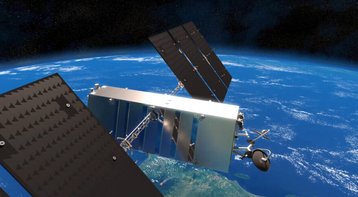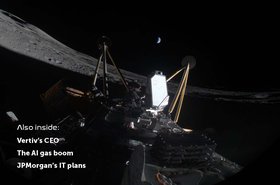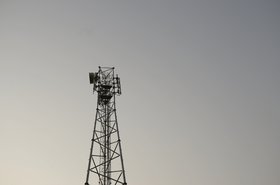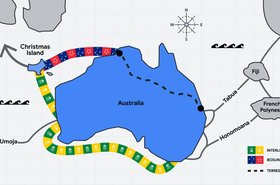Canadian satellite firm Telesat has announced that it has signed a large multi-year contract for its landmark Ka-band Lightspeed low Earth orbit (LEO) service to Viasat.
Announced this week, Telesat will integrate its service into Viasat’s to form a multi-orbit network capable of serving the connectivity needs of a wide span of sectors, including aviation, maritime, enterprise, and defense.
“We designed Telesat Lightspeed with advanced capabilities to meet the demanding, secure, mission-critical requirements of enterprise and government users, with unprecedented flexibility in how our customers define, deliver, manage, and monitor the quality of experience to their end users,” said Dan Goldberg, president and CEO of Telesat in a statement.
Viasat described the contract as a means of further diversifying its market offering to gain exposure to as many customers as it can.
“By leveraging our own satellite fleet and its unique advantages, existing national operator partnerships, plus coverage and capacity from leading third-party satellites and constellations, our services are designed to provide customers with the essential capacity density, market access, speed, bandwidth, and responsiveness they need,” added Mark Dankberg, chairman and CEO of Viasat.
Aviation advantage
Announced in 2016, Lightspeed is due to comprise 198 satellites in polar and inclined orbits, with the launch commencing via SpaceX rockets in 2026 at a 1,000 km altitude.
The MDA-designed constellation will have 10Tbps in total capacity with four 10Gbps optical inter-satellite links interconnecting the satellites, with over 1Gbps across user terminals. Telesat’s contract with MDA also features options for the production of an additional 100 satellites for a potential 298-strong constellation.
Viasat, which recently merged with Inmarsat, has a fleet of 19 satellites in service, with an additional 10 spacecraft under construction and planned for launch within the next three years, operating across the Ka-, L-, and S-bands.
Viasat has long provided airlines with connectivity components, including the GM-40 antenna aboard thousands of airplanes and still being installed today. In late 2027, those antennas will be able to access the Telesat Lightspeed network when its global services enter their commercial phase. Between now and then, Viasat will also install its electronically steerable antennas (ESAs), which can use more advanced parts of the Lightspeed constellation.
“Telesat estimates the total addressable market for LEO aviation services at ~$17 billion in 2032,” Glenn Katz, CCO at Telesat told DCD. “With airlines moving towards offering free Wi-Fi and improved inflight connectivity services due to the low-latency connectivity of LEO, capacity demand per aircraft is projected to increase throughout the next decade.”
Telesat also intends to support large airport hubs backed by enterprise-grade service level agreements and connect flights across polar regions, aspiring toward a “gate-to-gate” consumer connectivity experience.
The cyber question
Industry anxieties over the cybersecurity of consumer-grade connectivity abound, a debate in which Viasat has long been a lightning rod after their KA-SAT network was successfully targeted by a Russian military cyber-attack, supposedly with an unseen strain of “AcidRain” malware. The incident occurred on February 24, 2022, the day of Russia’s invasion of Ukraine, interrupting service to disrupt Ukrainian command and control efforts. The company has since fought hearsay that it underestimates cyber requirements.
In a statement on the multi-year contract, Telesat emphasized its compliance with government-grade cyber standards and its adoption of zero-trust network architecture.
“In addition to following several compliance frameworks, and forthcoming certification under those frameworks, Telesat participates in several government and industry forums, including the Canadian Commercial Integration Cell (CIC) at 7 Wing (Space), an information-sharing structure focused on space operations established between the Canadian Armed Forces and industry to enable discussions and data-sharing,” Telesat’s Katz told DCD.
In its recent earnings report charting the quarter and twelve months ending December 31, Goldberg headlined the company’s industry-leading adjusted EBITDA margins, significant cash flow, and GEO backlog of $1.1bn.
“We are laser-focused on executing to meet our 2025 guidance in the GEO business and commercializing Telesat Lightspeed,” Katz told DCD. “We’re making strong progress across the development of our LEO satellites, landing stations, user terminals, and software development, and expect to launch our first batch of satellites late next year. Additionally, we have strong engagement across our telecom, enterprise, maritime, and government customers and prospects, and we believe we’ll have more great announcements to share in the coming months.”







